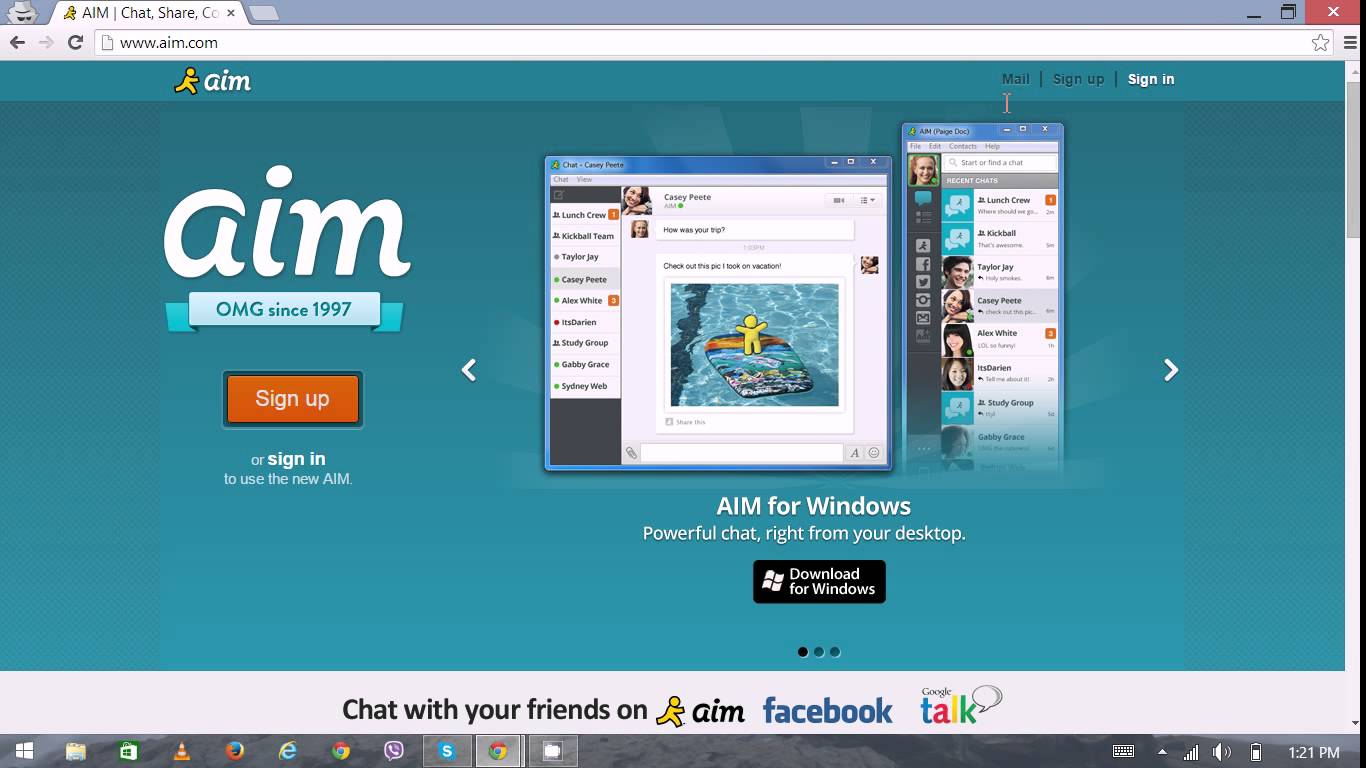
The first version of Apple iChat for example was powered by AIM.īut this open nature lead to unwanted attention from Microsoft. And other companies also sought to integrate AIM into their products. Dirty Tricks?īy now AOL’s management had recognised the power of AIM, and they even acquired another messaging company, Mirabilis, which operated ICQ. Indeed, AIM quickly became the dominant messaging program of the late 1990s and early 2000s. This meant that AIM would run through all the available ports until it found one that was not, which made it very difficult for IT departments to ban.ĪIMs growth continued unchecked and it soon reached as 18 million simultaneous users, mostly in the US.

Business Useīut with the AIM product, AOL began to find penetration in the business community and it was used by most of Wall Street for a time.īut AIM also was the bane of IT managers, because the product automatically probed for a way to connect if its primary port was blocked. Its service was spread mostly by freebie floppy discs, and it was competing hard against the likes of Prodigy and CompuServe, in an effort to become the dominant ISP in North America. It should be remembered that AOL was a consumer focused firm. Bosco had at this time been promoted to a management position and reportedly had to fight to keep management from pulling the plug on AIM. This allowed registered users to communicate in real time.ĪIM was initially integrated into AOL Desktop, but such was its popularity that AOL took the decision to release AIM as a stand-alone download in May 1997 for the Windows platform.ĭespite this early success, AOL management were unconvinced that a free product was of any value to the firm. When AIM was created, AOL used the proprietary Open System for CommunicAtion in Realtime (OSCAR) messaging protocol. Indeed, on the first night the executable code was downloaded over 900 times as the word spread of this product. Word started to spread, and downloads of AIM grew. But the AOL FTP platform was immensely popular with users, who soon noticed the AIM product sitting there. Indeed, AIM was unceremoniously put on one of the company’s file transfer protocols (FTP), a common way for files to be moved from one computer to another over the Internet.ĪIM didn’t even have its own webpage, from which it could be downloaded. So AOL quietly released AIM in May 1997 with very little fanfare. It took the strong backing of the development team to get approval for the launch of AIM.

Indeed, AOL management reportedly wanted to kill off AIM and even considered firing Appelman. It went against the company’s entire ethos.

AOL management did not want to offer a product free of charge.


 0 kommentar(er)
0 kommentar(er)
